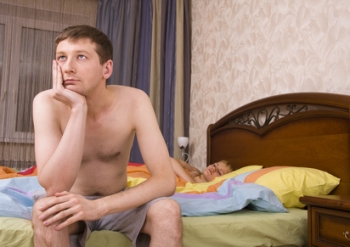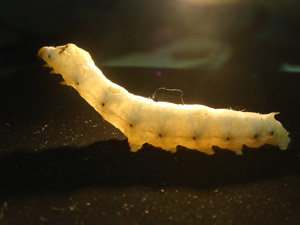AIB double-charged card users in bank’s €5m blunder


AIB has promised that thousands of shoppers who were double-charged when they used debit and credit cards will not end up having to pay bank charges or overdraft fees because of the blunder.
People who bought goods and services with plastic cards on Monday ended up being charged twice when they used terminals supplied to retailers by a firm part-owned by AIB.
The blunder involved some 48,000 card users who made a combined total of 88,000 transactions, valued at €5m.
And anyone who had a refund processed on the same day ended up getting double the amount of money they were due. A problem with 15,000 pointof-sale terminals supplied by AIB Card Services led to the double-charging.
If a customer paid €20 using one of the machines, €40 was deducted from their card.
Any purchases made with either Visa or MasterCard debit, credit and pre-paid cards were double-charged. The blunder affected cards issued by any bank, and not just AIB. However, Laser card transactions escaped the mess-up.
Una Dillon of the Irish Payments Services Organisation, a representative body for the payments industry, advised consumers to check their bank accounts to see if they have been overcharged, and if they have, to ensure the refunds have gone through.
A technical fault meant that terminals supplied by AIB Merchant Services (AIBMS) double-charged customers and also credited retailers on the double, in error.
AIB Merchant Services (AIBMS) said all affected customers would now be refundedThe company is a joint venture between international electronic commerce and payment services firm First Data Corporation and AIB. First Data processes AIBMS transactions.
The technical fault occurred at First Data’s processingoperation in Germany. The fault has been resolved, the card services firm said.
AIBMS said it was working to ensure that affected customers are reimbursed promptly and apologised for any inconvenience caused.
Refunds are expected to appear in customer accounts in days.
“The money will go back into customers’ accounts automatically but if they want to double-check, they can contact their branch,” an AIBMS spokeswoman said.
The double-charging could mean that some consumers could end up being overdrawn on their current accounts.
Others could incur fees and charges if the balance in their account has dipped below certain levels.
With Bank of Ireland, customers are charged transaction fees if they fail to keep at least €3,000 in their accounts. AIB charges fees if balances dip below €2,500 at any stage in a three-month period.
Yesterday, AIB Card Services insisted it would make sure there were no charges imposed on account holders in any bank due to its double-charging blunder.
Customers worried that they have been overcharged can contact the company on the following number: 0818724724, or at their local AIB branch.
Cardholders should contact their issuing bank, the bank will confirm the credit has been posted to their account, the company said.
Vibrating platform could increase strength & agility in elderly people unable to exercise


When the elderly can’t exercise, doing stints on a vibrating platform may help them become slightly stronger, faster and more agile, says a Spanish study.
The method used in the study, which appeared in the journal Maturitas, involves standing on top of a flat platform about the size of a boogie board that sends mild vibrations through the feet to the rest of the body.
While on the platform, the person does exercises such as standing or squatting, with bending the knees helping to transmit the vibrations.
Exercise is the best option for good health in older age, said lead author Alba Gomez Cabello, but for those unable to perform aerobic exercise, this vibration technique “could be an easy and quick treatment to improve physical fitness.”
In the study, funded by the Spanish government, 24 men and women over 65 performed 10 squats held for 45 seconds on the vibrating platform, with a minute rest in between, three times per week for 11 weeks. The study also included 25 people who did not take part in the vibration exercises.
There were some differences between the groups by the end of the study, although they were small. Those who did the exercises were, on average, able to do two more reps of upper and lower body strength exercises, had almost half an inch more lower body flexibility, and walked 33 yards one second faster than before the vibration training.
“Whole body vibration is an easy and quick way of exercise that stimulates muscles and improves fitness,” said Cabello, who studies growth and exercise at the University of Zaragoza, Spain.
In theory, vibrations help activate muscles, strength bones and improve circulation in people of all ages. But the vibrating platforms have shown mixed results in recent research, improving balance and muscle tone in some studies but failing to prevent bone loss in post menopausal women in another.
There still isn’t enough evidence to convince most exercise scientists to advocate the devices, according to Wojtek Chodzko-Zajko, who studies aging and physical activity at theUniversity of Illinois at Urbana-Campaign.
“That doesn’t mean it’s a scam, it means there’s really been very little study of this kind of intervention,” he said.
The vibration group did squat reps, while the comparison group did not, so some of the fitness improvements could have been due to the squatting exercises and not the vibration.
A better assessment of the true health of older adults would take into account whether whole body vibration influences chronic conditions like heart disease and mental health, depression and anxiety, he said.
His 82-year-old mother has a whole body vibration machine in her bedroom, which she uses every morning to “loosen up her joints.”
Chodzko-Zajko gives her the same advice he’d give anyone: “I don’t think it’s going to do you any harm, but don’t stop doing your regular exercise routine.”
New Irish/EU driving licence makes its entry into motorists pockets


All new driving licences issued in Ireland from today will be in the form of a plastic “credit card”, as a new European Union directive comes into force.
The move is part of a move to harmonising EU-wide driving licences.
Existing licences will still be valid, and will be changed to the new format at the time of renewal, or by 2033 at the latest.
Ireland is one of the few countries in Europe to still have a paper licence.
Speaking in Brussels yesterday, EU transport commissioner Siim Kallas said the new licences were a key way of tackling fraud and road safety, as well as improving access between member states.
What drugs affects arousal in men?


The drug that most affects sexual arousal in men is alcohol, a new study has found. Furthermore, quitting drinking may not solve the problem.
Spanish and Columbian scientists looked at over 900 men, 550 of whom had been diagnosed with an addiction to either alcohol, cocaine, alcohol and cocaine, marijuana, heroin or heroin and cocaine.
The sexual performance of all the men was assessed. Performance was divided into four categories – sexual desire, sexual arousal, sexual satisfaction and orgasm.
The scientists looked at the effects the different drugs had on each category.
The study found that overall, the sexual performance of those using drugs was moderately to significantly impaired compared to those who did not use drugs.
Different drugs had different effects on the various categories. For example, cocaine use did not usually affect sexual desire, but did affect sexual pleasure. Meanwhile, cocaine, heroin and alcohol all affected the ability to orgasm.
When it came to sexual arousal, alcohol had the biggest detrimental affect. And this problem did not appear to resolve even if the men stopped drinking. This contradicts other studies which indicate that sexual performance returns to normal a few weeks after quitting drugs.
According to the scientists, this is the first study to show what appears to be the permanent effect alcohol can have on sexual performance.
Wyoming scientists at Notre Dame University genetically engineer silkworms to produce artificial spider silk


A research and development effort by the University of Notre Dame, the University of Wyoming, and Kraig Biocraft Laboratories, Inc. has succeeded in producing transgenic silkworms capable of spinning artificial spider silks.
“This research represents a significant breakthrough in the development of superior silk fibres for both medical and non-medical applications,” said Malcolm J. Fraser Jr., a Notre Dame professor of biological sciences. “The generation of silk fibres having the properties of spider silks has been one of the important goals in materials science.”
Natural spider silks have a number of unusual physical properties, including significantly higher tensile strength and elasticity than naturally spun silkworm fibers. The artificial spider silks produced in these transgenic silkworms have similar properties of strength and flexibility to native spider silk.
Silk fibers have many current and possible future biomedical applications, such as use as fine suture materials, improved wound healing bandages, or natural scaffolds for tendon and ligament repair or replacement. Spider silk-like fibers may also have applications beyond biomedical uses, such as in bulletproof vests, strong and lightweight structural fabrics, a new generation athletic clothing and improved automobile airbags.
Until this breakthrough, only very small quantities of artificial spider silk had ever been produced in laboratories, but there was no commercially viable way to produce and spin these artificial silk proteins. Kraig Biocraft believed these limitations could be overcome by using recombinant DNA to develop a bio-technological approach for the production of silk fibers with a much broader range of physical properties or with pre-determined properties, optimized for specific biomedical or other applications.
The firm entered into a research agreement with Fraser, who discovered and patented a powerful and unique genetic engineering tool called “piggyBac”. PiggyBac is a piece of DNA known as a transposon that can insert itself into the genetic machinery of a cell.
“Several years ago, we discovered that the piggyBac transposon could be useful for genetic engineering of the silkworm, and the possibilities for using this commercial protein production platform began to become apparent.”
Fraser, with the assistance of University of Wyoming researcher Randy Lewis, a biochemist who is one of the world’s foremost authorities on spider silk, and Don Jarvis, a noted molecular geneticist who specializes in insect protein production, genetically engineered silkworms in which they incorporated specific DNAs taken from spiders. When these transgenic silkworms spin their cocoons, the silk produced is not ordinary silkworm silk, but, rather, a combination of silkworm silk and spider silk. The genetically engineered silk protein produced by the transgenic silkworms has markedly improved elasticity and strength approaching that of native spider silk.
“We’ve also made strides in improving the process of genetic engineering of these animals so that the development of additional transgenics is facilitated,” Fraser said. “This will allow us to more rapidly assess the effectiveness of our gene manipulations in continued development of specialized silk fibers.”
Since silkworms are already a commercially viable silk production platform, these genetically engineered silkworms effectively solve the problem of large scale production of engineered protein fibers in an economically practical way.
“Using this entirely unique approach, we have confirmed that transgenic silkworms can be a potentially viable commercial platform for production of genetically engineered silk proteins having customizable properties of strength and elasticity,” Fraser said. “We may even be able to genetically engineer fibers that exceed the remarkable properties of native spider silk.”
The genetic engineering breakthrough was announced today (Sept. 29) by Fraser, Lewis and Kraig Biocraft CEOKim Thompson at a press conference on the Notre Dame campus.
Plastic cards are very helpful when your aim is to facilitate your customers and want to increase in the revenue..Plastic Card
ReplyDelete